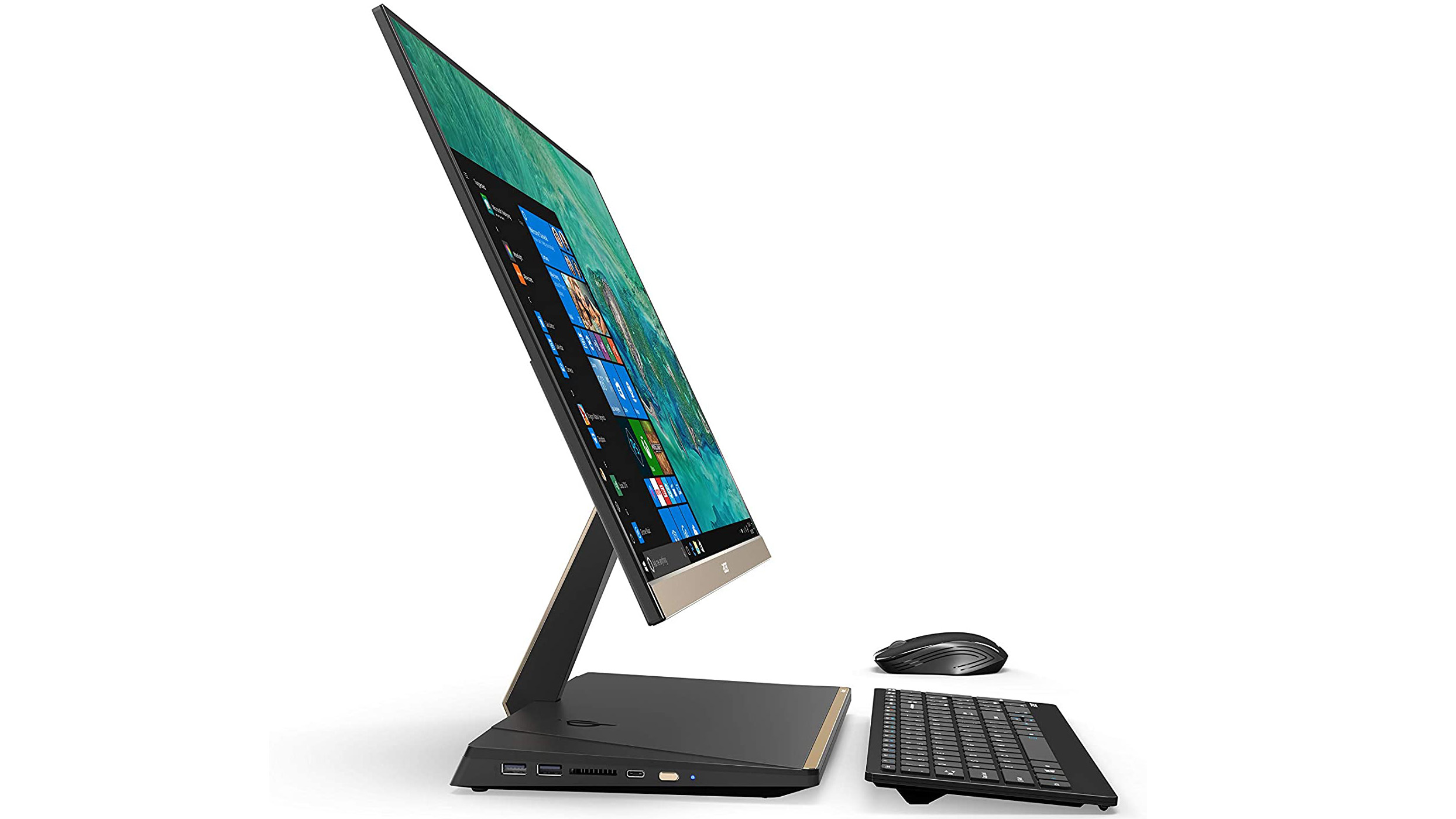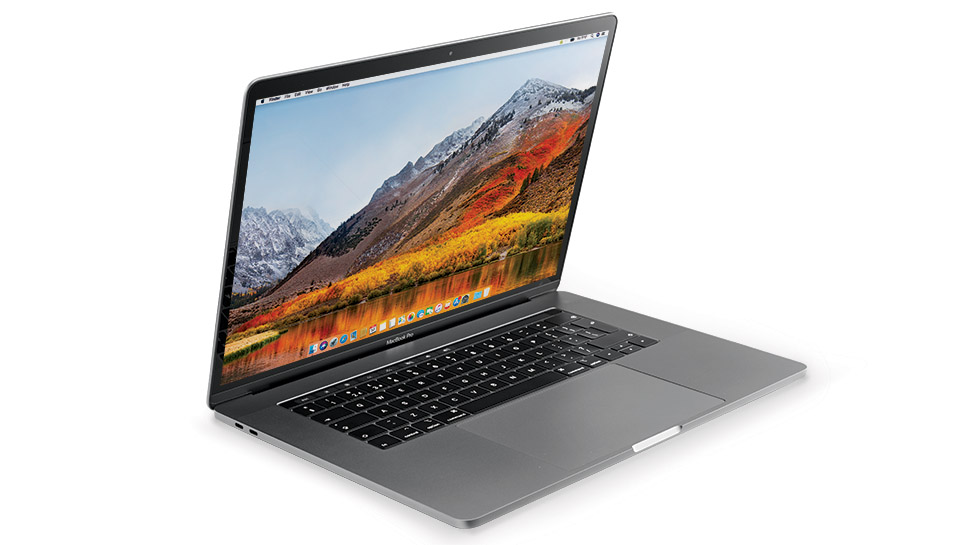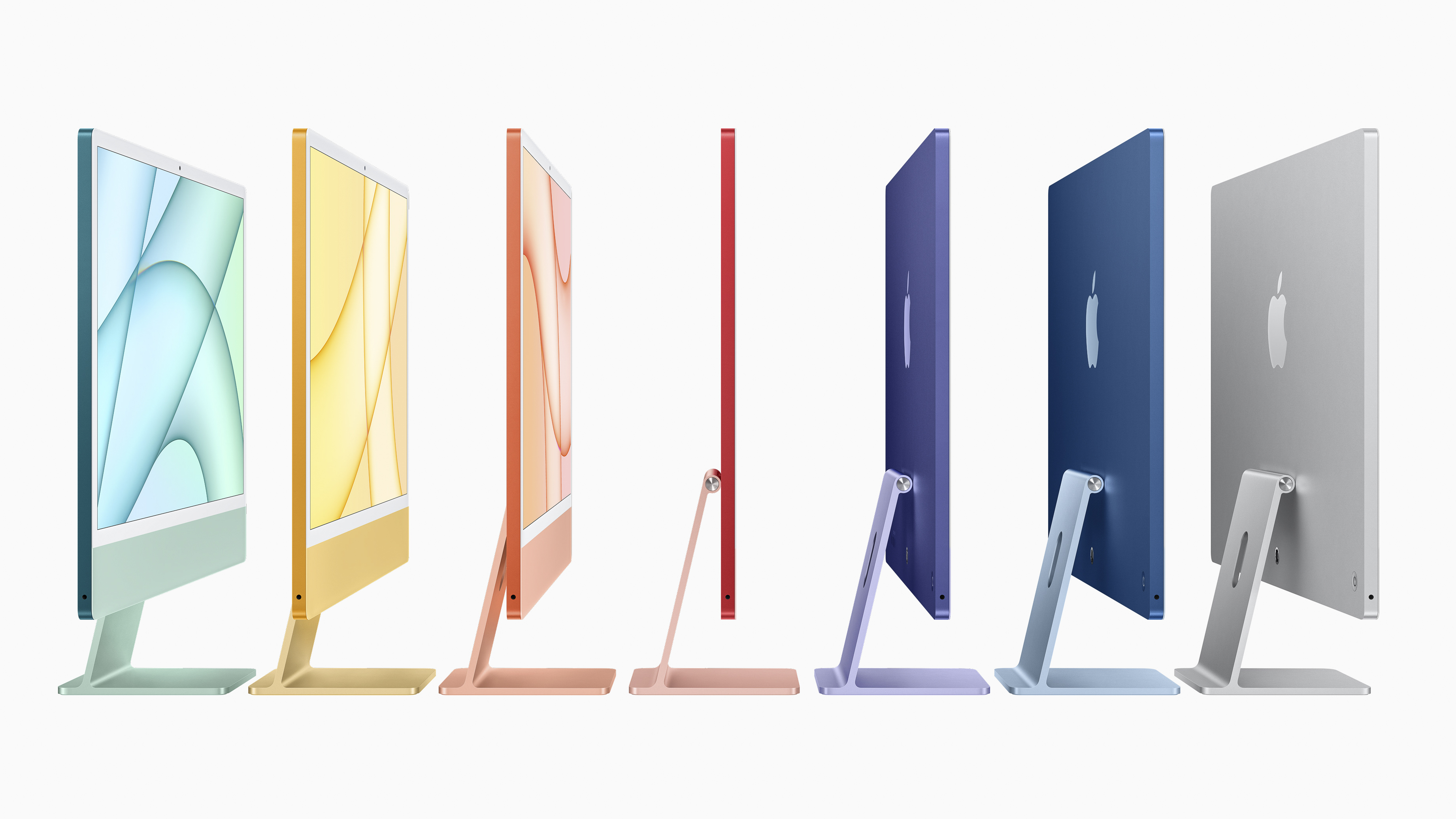The new iMac is thinner than an iPhone, but should you even care?
Yes, at 11.5mm thick, the latest 24” iMac is slimmer than an iPhone 3GS – great news if you’re not blessed with a deep desk

The quest for the slimmest, most wafer/paper/razor thin designs has dominated the tech industry for years, with laptop, tablet and phone manufacturers continually compressing each successive model generation down to the thickness of a perished prophylactic.
At 11.5mm thin, even the new iMac (announced at the Apple Event this week) can’t definitively claim to be the thinnest-ever desktop computer – the Acer Aspire S 24 manages to be just 6mm thick, though it can only manage that by housing the computing hardware in its stand.
There is some argument for thinness being beneficial for portable devices. Nobody wants a bulky laptop or tablet, and a thin phone can be a good thing for those with particularly tight jeans’ pockets, if you’re prepared to live with a handheld device that doesn’t even pay lip service to physical ergonomics. But as for a computer designed to spend its whole existence sitting on your desk? Well, let’s face it, an extra millimetre, centimetre or even inch isn’t really going to make a meaningful difference, unless you’re taking small-space living to the extreme.

What’s more, the obsession with compression may actually have negative repercussions. Computer processors work hard and generate heat as a result. Restricting the room they have to breathe means less space for heat-dissipating heatsinks and fans, and since Apple has historically kept its computers as quiet as possible, those downsized fans won’t be spinning faster to compensate. Thankfully, excessive heat build-up is unlikely to bother the new iMac, as its M1 processors are designed for ultimate power and thermal efficiency, so it’s doubtful we’ll see a repeat of the old 2018 Core i9 MacBook Pro fiasco where it could get so hot the processor had to aggressively slow itself down (thermal throttle) just to avoid burning up.

One could also argue that a thinner iMac means less of the earth’s resources being used to make it, a smaller carton used to transport it, and in turn fewer ships liable to end up beached in a canal trying to bring it to your local Apple store. All valid points, but with such sleekness and possible resource savings come other less eco-friendly consequences. When some brave soul decides to do a teardown of the new iMac, you can bet it’ll be about as accessible as Apple’s accountancy department, and if you can get inside, good luck finding a component that isn’t permanently soldered to the motherboard.
To be fair to Apple, a lot of other all-in-one desktop computers are equally impossible to upgrade in the future, but Apple is widely credited with popularizing this movement towards un-upgradable tech. The upshot is you’d better be darned sure you spec your new iMac generously at the point of purchase, as when the time comes to upgrade your camera to a megapixel monster, you could find an entry-level iMac doesn’t take too kindly to editing those big-ass new raw files. Then you run the risk of being left with a precision-engineered, beautifully colourful paperweight. But every cloud has a silver lining – at least at 11.5mm thick, it won’t take up much space in the trash can.

But of course none of these boring practical considerations matter one iota - the new iMac is just so good looking it hardly matters what’s inside. It would have been irresistible if Apple had stuck to its usual silver colorway, but now the 24-inch iMac can be had in a whole rainbow of hues, all I can think about is recreating Apple’s iMac press image for real, on my desk. And with each iMac being so incredibly thin, they’d probably all fit.
Get the Digital Camera World Newsletter
The best camera deals, reviews, product advice, and unmissable photography news, direct to your inbox!

Read more
The best iMac for photo editing
The best photo-editing laptops
The best laptops for video editing
The best photo-editing software
Ben is the Imaging Labs manager, responsible for all the testing on Digital Camera World and across the entire photography portfolio at Future. Whether he's in the lab testing the sharpness of new lenses, the resolution of the latest image sensors, the zoom range of monster bridge cameras or even the latest camera phones, Ben is our go-to guy for technical insight. He's also the team's man-at-arms when it comes to camera bags, filters, memory cards, and all manner of camera accessories – his lab is a bit like the Batcave of photography! With years of experience trialling and testing kit, he's a human encyclopedia of benchmarks when it comes to recommending the best buys.

